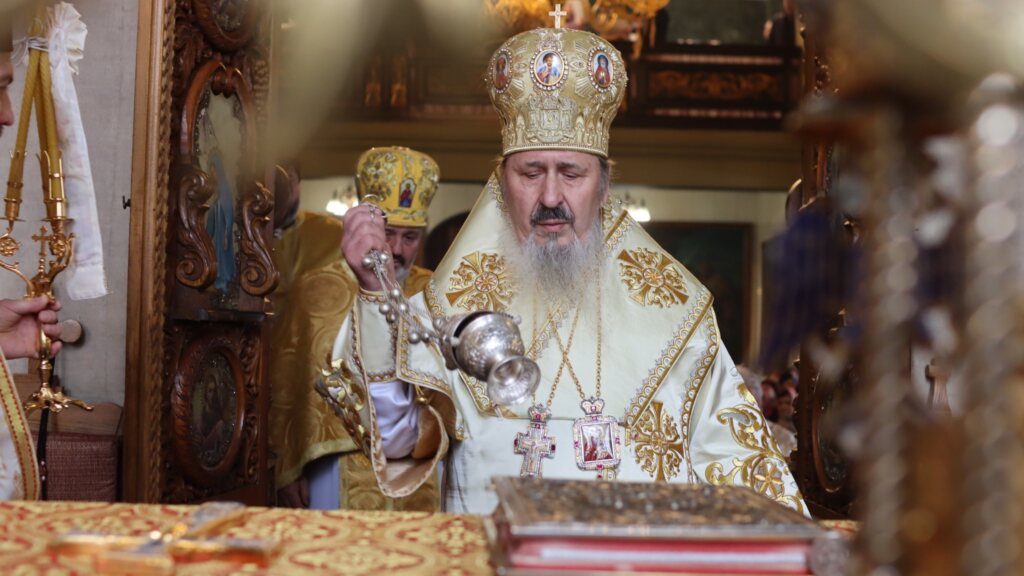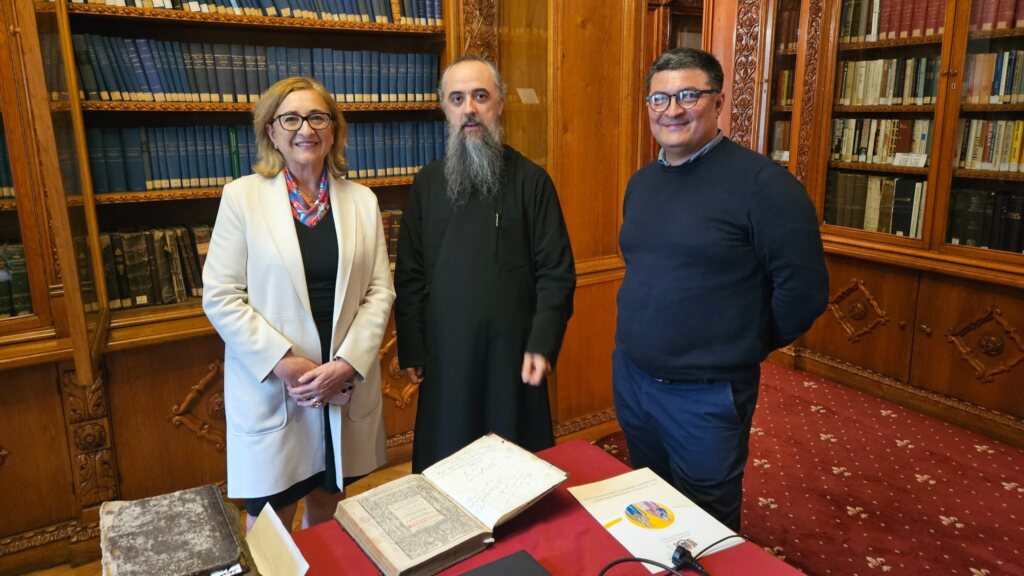“We welcome with great joy this decision of the Holy Synod,” Nun Antonia Popescu, abbess of Tismana Monastery, told Basilica.ro upon receiving the news that Archimandrite Gherasim Iscu is one of the confessors proposed for canonization.
Father Gherasim was the last abbot of the monastery before it turned into a women’s monastery.
“Father was a scholar, but also an efficient, enterprising, hardworking man. He served the Church as abbot and exarch; he was sent on a mission to Transnistria during the Romanian administration,” nun Antonia reminded.
“He left a bright image everywhere,” said the abbess about Father Gherasim Iscu. “Including in the communist prisons where he was imprisoned (Craiova, Aiud, Pitești, Gherla, Canal, Târgu Ocna). An image of a Hesychast intercessor, a devoted priest, self-sacrificing in all circumstances.”
Mother Antonia evoked the miraculous way in which the soon-to-be-Saint Gherasim departed from this world:
“A few moments before he died, he asked to be taken to the bed of his torturer, who was imprisoned (providentially) in the same cell, to tell him that he forgives and loves him, to confess and commune him. He knew in advance, his cellmates tell, that this was the night of his departure to the Lord; he had asked them to be changed and prepared, explaining that he does not want to leave behind an unkempt body.”
“He departed without any fear and with all hope in the mercy and love of Christ.”
Abbess Antonia reminded that Archimandrite Gherasim was caught up to heaven shortly before his death, as an assurance of the reward that awaited him: “he was caught up, as he confessed: ‘far away, in a place of green pasture, of chant and fragrance, made of lights. That’s wonderful. It’s peace. It is impossible to express what is there. There is so much gladness that even the joy of seeing yourself becomes a suffering through the contrast between the two worlds’.”
“We, as a monastic community, feel him like our heavenly Father and protector, and that’s how we often address him. And we have every hope that we will be heard.”
“Pilgrims show the same devotion; they are impressed to tears listening to the story of his death and take him as a helper and guide to forgiveness.”
The abbess also recalled an account of the last living relative of Father Gherasim, a nephew from a brother, who felt the providential help of the Father when he miraculously escaped from what could be a severe car accident.
Father Gherasim Iscu
Father Gherasim Iscu saw the light of day in Poduri commune, Bacău county, on January 21, 1912. He was received at the age of 12 as a novice at Bogdana Monastery. He studied at the Monastic Seminary at Neamț Monastery and Cernica. He graduated from the Faculty of Theology in Bucharest.
It is remembered that he studied three more faculties and knew seven foreign languages.
He was tonsured a monk at Tismana; he became an abbot of Arnota Monastery at only 25 and was sent on a mission to Transnistria. When he returned, he became the abbot of Tismana in turbulent times. He took over the monastery after it had been used as a camp for Legionnaire prisoners and went through a severe fire of 1942.
On September 26, 1948, he was arrested. He was initially taken to Craiova, then went to Aiud, Pitești, Gherla and Poarta Albă Canal. After long-sufferings with dignity, he fell ill and was taken to the Sanatorium in Târgu-Ocna. He fell asleep in the Lord on December 25, 1951.
Photo: Fresco at Afteia Monastery depicting Father Gherasim Iscu






